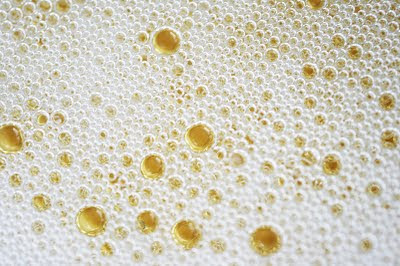Across a large and arid landmass important rivers cut through the new wine industry of culturally-diverse Spain. From the North runs the Rio Ebro from West to East, slicing through the Rioja, the Navarra and on to the golden schist Ilicorella soils of Priorat. Out of the northern hills, the prominent Duero empties to the West, past Ribera del Duero, Rueda, and Toro, before becoming the Port highway thru neighboring Portugal. And in the Andalusian south, the Rio Guadalquivir flows under the bright sun through fertile valleys until it spills into the Atlantic, just north of Jerez de la Frontera of the Moorish frontier. It is these important rivers, a handful of others, and the warmth of the almost-perennial sun that has made it possible for Spain to amass the greatest area of wine grape plantings in the world today.
From the Albarino vineyards of Rias Baixas in the Atlantic influenced Galician northwest, across the dry plain that is Don Quixote's La Mancha, and on to the poor, phyloxera-free soils of Jumilla near the Mediterranean coast, this is a very diverse wine growing country. This varied landscape is collectively the world's biggest vineyard, but its irrigated soils here are generally unproductive, and grape yields per acre remain among the smallest in Europe. In this dry climate, vineyard diseases are fortunately relatively few, and these factors combined with recent investment in modernization has allowed Spain to enjoy remarkable improvements in wine quality and value from the last quarter of the 20th century. Spain's four-tier classification system, consistent with EU wine-laws, has the Denominacion de Origen, or DO wines of specified regional standards as the mainstay of its national wine regulatory system. Today, almost 3/4 of all Spanish wines fall into this regionally regulated quality category.
Reserved for its highest levels of proven quality, the Qualified Denominacion de Origen(DOCa) ranking was adopted in 1991, and today only mighty Rioja DOQ and recently elevated Priorat have qualified. Of the more than 400 Spanish grape varieties planted, regional Rioja Alta-Alavesa-Baja-blended Tempranillo(Cencibel) is the principal base of the aged Riojas', while red Garancha Tinta(Grenache) and work horse Carinena(Carignan or Mazuelo) dominate in the distinctive soils of Priorat. Other emerging regions of note include Castile y Leon's white wine dominated Rueda DO, where crisp Verdejo's are of good quality, and tiny Toro DO, producing reds/rose's from Tinta de Toro(Tempranillo) and good whites from Verdeho & Malvasia. In the Mediterranean influenced south, the Murcia region has become notable for good quality reds from the Monastrell(Mouvedre or Mataro)grape in Jumilla DO as well as Yecla DO.
As important as the improved wines from the warm regions are, there is also excitement in the 'Green Spain' of autonomous Galicia, which gets more than 50 inches of rainfall each year. Known principally for seafood friendly white wine blends dominated by Albarino, it includes the DO's Valdeorras, Ribeira Sacra, prominent Rias Biaxas and Monterrei. Along the Rio Mino valley, which runs into neighboring Portugal, Rias Biaxas is further divided into five(5) sub-zones. Catalonia is yet another autonomous region of Spain, where north of Priorat the sparkling wine or Cava center of Penedes DO is found. Produced in the traditional method, the blended base of these good-value sparklers are the white natives Xarel-lo, and Macabeo(Viura), and even some Chardonnay.
 | |
| Albariza soils of Jerez |
A change to quality from most accounts has come quickly in these areas of Spain, yet it has been the Andalusian Jerez - Xeres - Sherry DO district around Cadiz province that has continued over the centuries to produce the 'neglected wine treasure' that is known simply as Sherry. The dry fermentation of white Palomino(Listan)grapes grown in the regions chalky albariza soils, time-honored Sherry is then fortified, barreled, and then await natures determination as to its classification, fino or oloroso. Once classified, it is adjusted and enters the nursery of the Solera System. Sweetness and color are added by virtue of dried Pedro Ximenez and Moscatel grapes, to create a fortified wine that is a copy of every bottle of that style that has come before it.
With their regional guarantee of authenticity proudly displayed on the label, young Spanish wines can be noted as Vino Joven. Red wines indicated as Crianza, have been aged at least for two(2) years, with whites and rose's aged for a minimum of a year. Reserva wines have been aged almost twice as long; at least 3 years for reds, and even longer cellaring of Grand Reserva generally only appears in the best vintages.
In our modern world regulatory cellar aging is only one of the endearing things about proud Spain. Her long wine history, going back to the Phoenicians, and diversely autonomous regional peoples, give Spain strong cultural traditions. The harsh climate adaptations in her vineyards, and the quick modernization of her wine industry instill the admiration of many wine lovers. Combined with a recent French Vignerons Independents report that cited Spanish wine production will soon overtake totals from France, and currently released figures that reflect the export growth in the wines of Spain now eclipsed the 2-billion litre volume mark for the first time ever, there is no better time to explore these Iberian improvements. It is a taste of traditions!
 | |
| Old Tempranillo vines in Rioja |


















